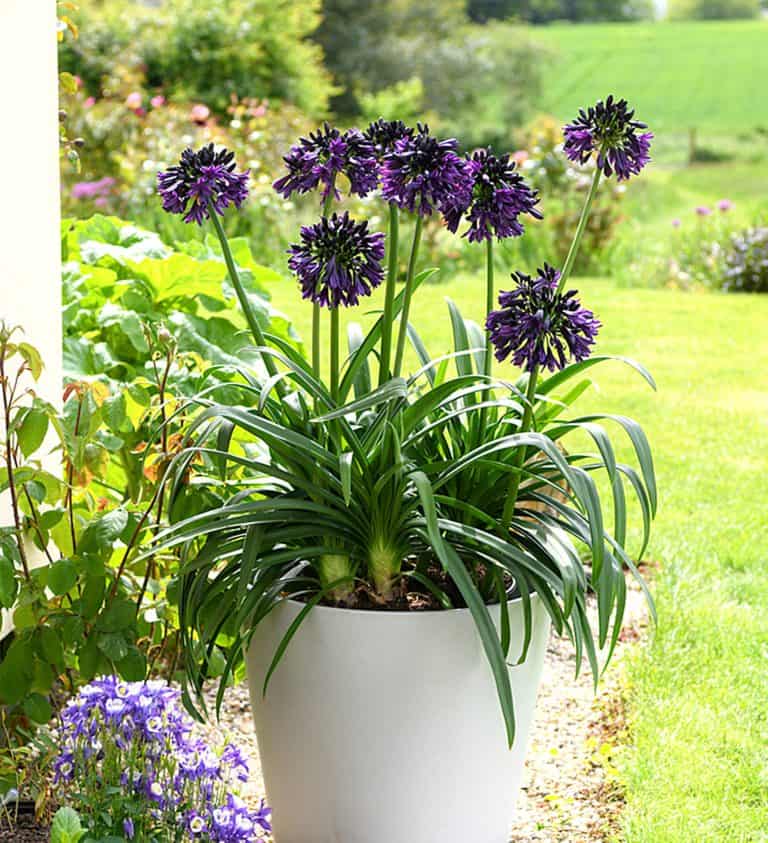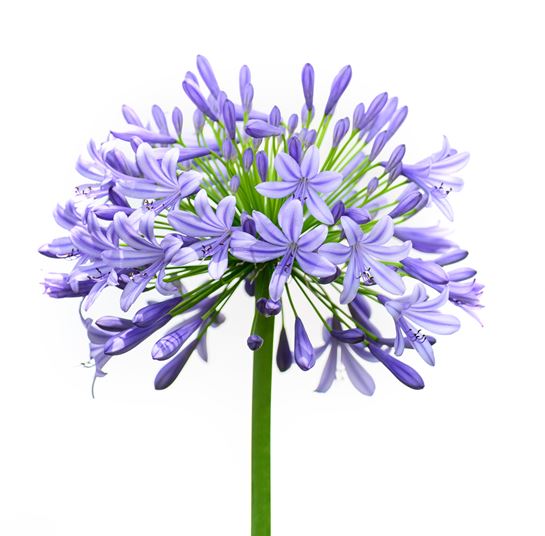Agapanthus Growing Problems: Soil, Sunlight, and Watering
Agapanthus Growing Problems: Soil, Sunlight, and Watering
Blog Article
Understanding the Art of Agapanthus Care: Crucial Actions for Healthy Development and Dynamic Blossoms
In the realm of gardening, the growing of agapanthus stands as a satisfying endeavor for those who look for to support these classy flowering plants. With their striking blossoms and elegant vegetation, agapanthus has actually caught the focus of gardeners worldwide. Nonetheless, achieving ideal growth and vivid blooms needs a nuanced approach that incorporates numerous crucial actions. From selecting the best selection to understanding trimming techniques, the journey in the direction of cultivating thriving agapanthus plants is multifaceted and holds the vital to unlocking the complete possibility of these agricultural gems.

Selecting the Right Agapanthus Variety

When choosing the right Agapanthus range for your garden, think about variables such as climate suitability, bloom shade, and development routine. In addition, think about the climate in your area to make certain the Agapanthus selection you choose can grow in your specific conditions. Comprehending the growth behavior of various Agapanthus varieties is important for appropriate positioning within your yard.
Suitable Growing Problems
Thinking about the optimal ecological requirements is crucial for successful Agapanthus farming. Agapanthus grows in well-draining dirt with a somewhat acidic to neutral pH level. When growing, choose a place that receives complete sunlight to partial shade. In hotter climates, offering some mid-day color can stop scorching of the fallen leaves. Agapanthus plants are delicate to chilly temperatures and must be shielded from frost throughout winter months.
To make certain healthy development and vivid flowers, plant Agapanthus light bulbs at a deepness of about 2-4 inches and area them 8-12 inches apart. Including natural matter, such as garden compost, to the dirt can boost drain and fertility, advertising durable origin development. Mulching around the base of the plants aids keep wetness and suppresses weed development. Routine watering is crucial, particularly during the growing period, to keep the dirt constantly damp however not soaked.
Watering and Fertilizing Tips
Preserving proper wetness levels and providing necessary nutrients are crucial aspects in the treatment regimen for Agapanthus plants. When it comes to sprinkling Agapanthus, it is essential to strike an equilibrium. These plants favor constantly my latest blog post wet dirt but are vulnerable to root rot if overwatered.
Feeding Agapanthus is necessary for promoting healthy and balanced growth and prolific flowers. Apply a well balanced fertilizer, such as a 10-10-10 formula, in the early spring as brand-new development emerges. By following these watering and feeding tips, you can guarantee your Agapanthus plants thrive and create lively, durable blooms.
Trimming Strategies for Agapanthus
Pruning Agapanthus plants at the appropriate times and with appropriate techniques is essential for preserving their health and promoting optimum growth and blooming. The suitable time to prune Agapanthus remains in late wintertime or very early springtime before new growth arises. Beginning by eliminating any type of yellowing or dead fallen leaves near the base of the plant. Cut them as short as feasible without harming the emerging shoots.
Deadheading invested flowers can additionally reroute the plant's power into creating even more flowers instead than establishing seeds. If you want to accumulate seeds for proliferation, leave have a peek at this site some flowers to dry and fully grown on the plant.
Keep in mind to use clean, sharp tools to make specific cuts and lower the threat of presenting conditions. Agapanthus. Normal pruning will certainly assist maintain your Agapanthus looking neat and healthy and balanced while ensuring an abundant display screen of lovely flowers
Dealing With Typical Pests and Conditions
After making certain proper trimming techniques for Agapanthus, it is crucial to address typical bugs and diseases that can impact the wellness and vigor of these plants. One typical parasite that impacts Agapanthus is the Agapanthus gall midget.
Additionally, Agapanthus plants can experience from root rot if they are planted in poorly draining pipes soil. By being watchful and taking prompt action against diseases and parasites, you can aid your Agapanthus plants thrive and produce vibrant blossoms. Agapanthus.

Verdict
Finally, mastering the art of agapanthus care includes choosing the ideal selection, supplying perfect growing problems, correct watering browse around these guys and fertilizing, suitable pruning techniques, and attending to usual pests and illness. By complying with these necessary actions, you can ensure healthy growth and dynamic blooms for your agapanthus plants. Keep in mind to routinely monitor and preserve your plants to advertise their general health and longevity.
To make certain healthy growth and dynamic blooms, plant Agapanthus bulbs at a deepness of about 2-4 inches and area them 8-12 inches apart. By following these watering and fertilizing ideas, you can ensure your Agapanthus plants flourish and generate lively, lasting blossoms.
One common parasite that affects Agapanthus is the Agapanthus gall midget. Additionally, Agapanthus plants can suffer from root rot if they are planted in improperly draining dirt. By adhering to these essential steps, you can make sure healthy growth and vibrant blooms for your agapanthus plants.
Report this page